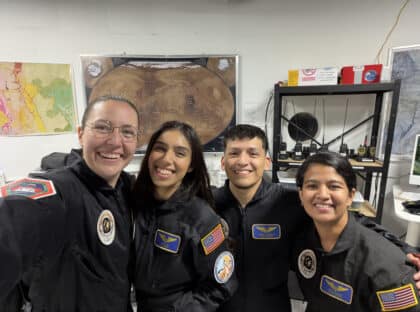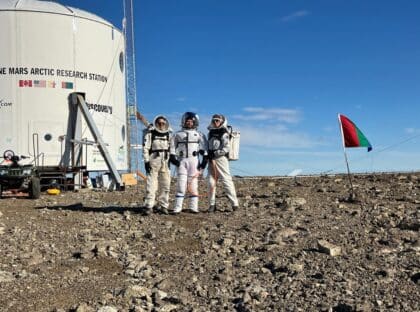
The Mars Society is pleased to announce the start of the 2025–26 field season at its Mars Desert Research Station (MDRS) in southern Utah on October 12th, with the arrival of Crew 319 — a four-person team of professionals in science, engineering, astronomy, and health sciences, joined by a documentary photographer from National Geographic.

This mission marks the beginning of a new year of analog research and field operations at MDRS and is part of the World’s Biggest Analog (WBA) — a globally coordinated two-week simulation connecting analog habitats and research teams around the world to test off-Earth living protocols, advance science, and foster public engagement in human space exploration.
At MDRS, Crew 319 has already begun an active research schedule that includes analyzing rock and soil samples in the science lab, observing sunspots with the Musk Observatory, and conducting a microgreens experiment comparing vermiculite and paper towel substrates for growing broccoli, radish, mung bean, and alfalfa sprouts. The crew has also been performing extravehicular activities (EVAs) using rovers (ATVs) across the Mars-like terrain surrounding the station and preparing meals with freeze-dried food to simulate life on the Red Planet.
The Mars Society and its MDRS management team, led by Sergii Iakymov and Ben Stanley, are proud to contribute to the World’s Biggest Analog initiative, which promotes international collaboration and innovation in analog research.
Follow Crew 319’s two-week adventure “on Mars” and stay up to date with mission reports at mdrs.marssociety.org. Much more to come as we continue advancing humanity’s understanding of living and working on Mars!


